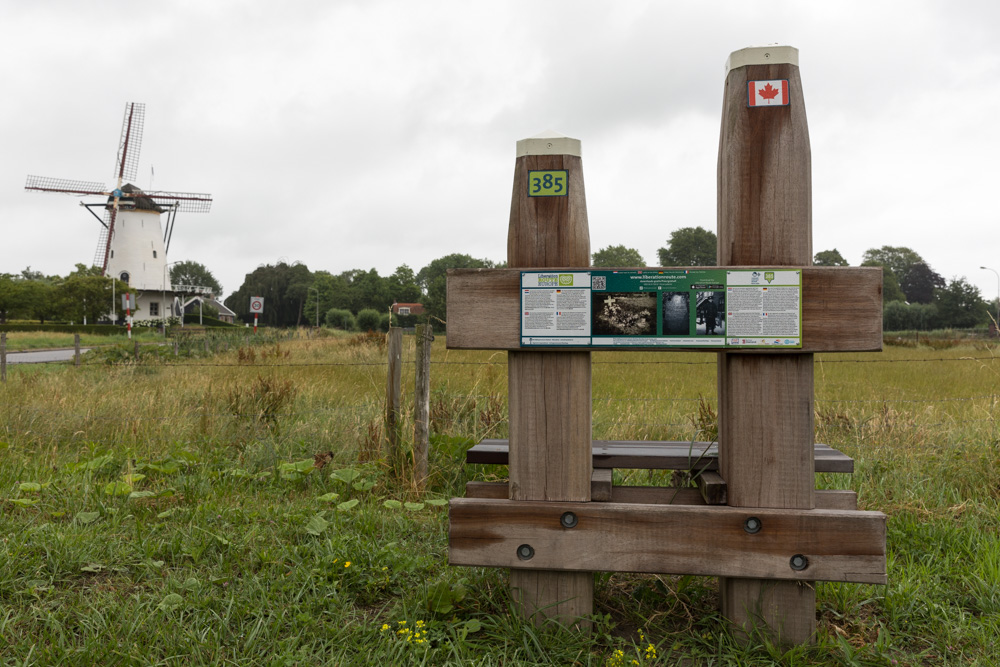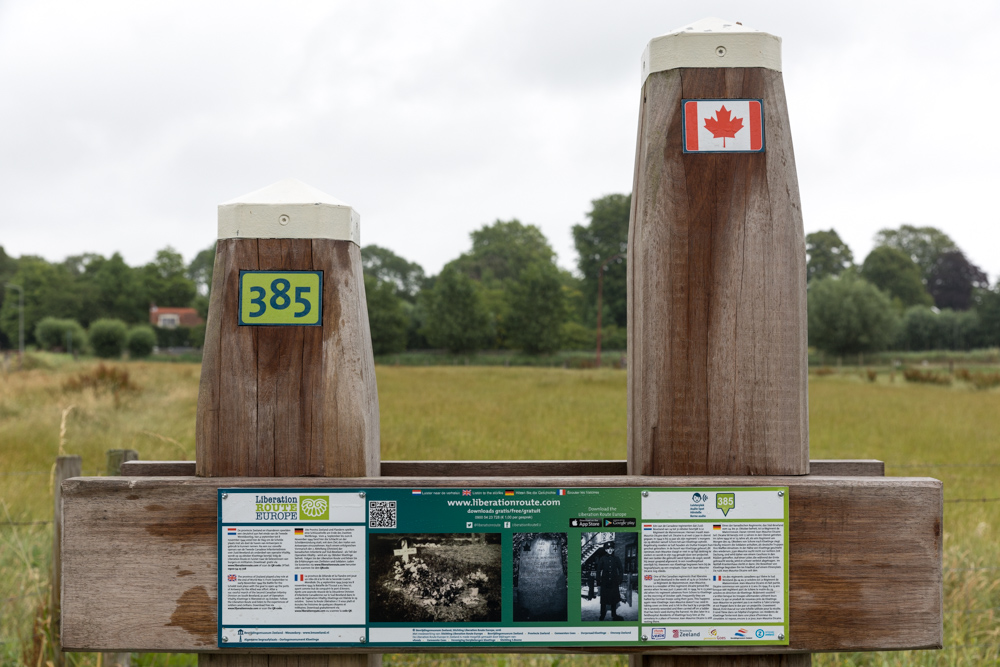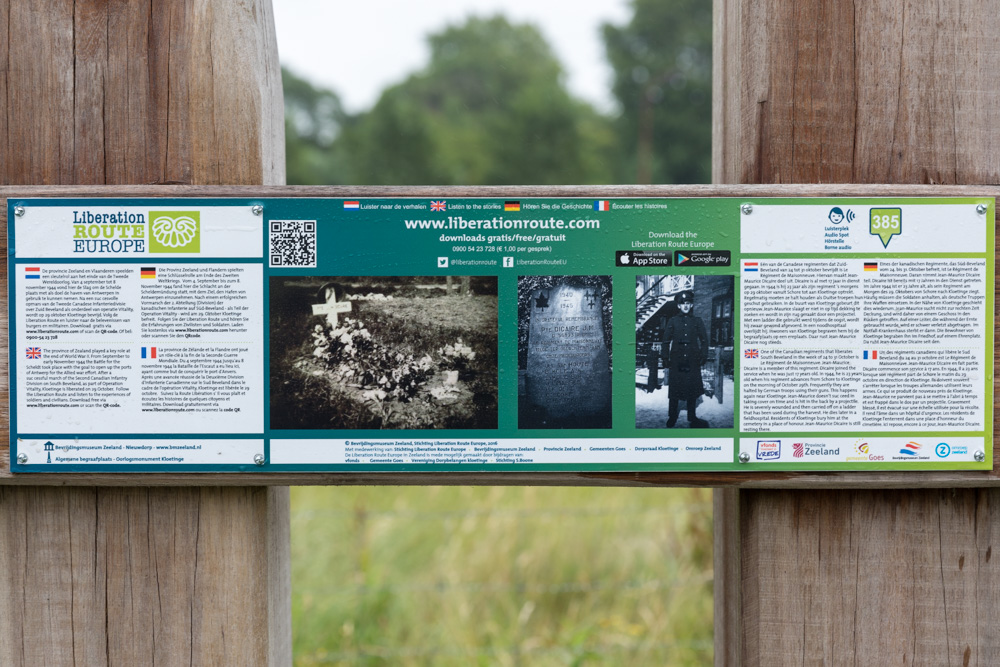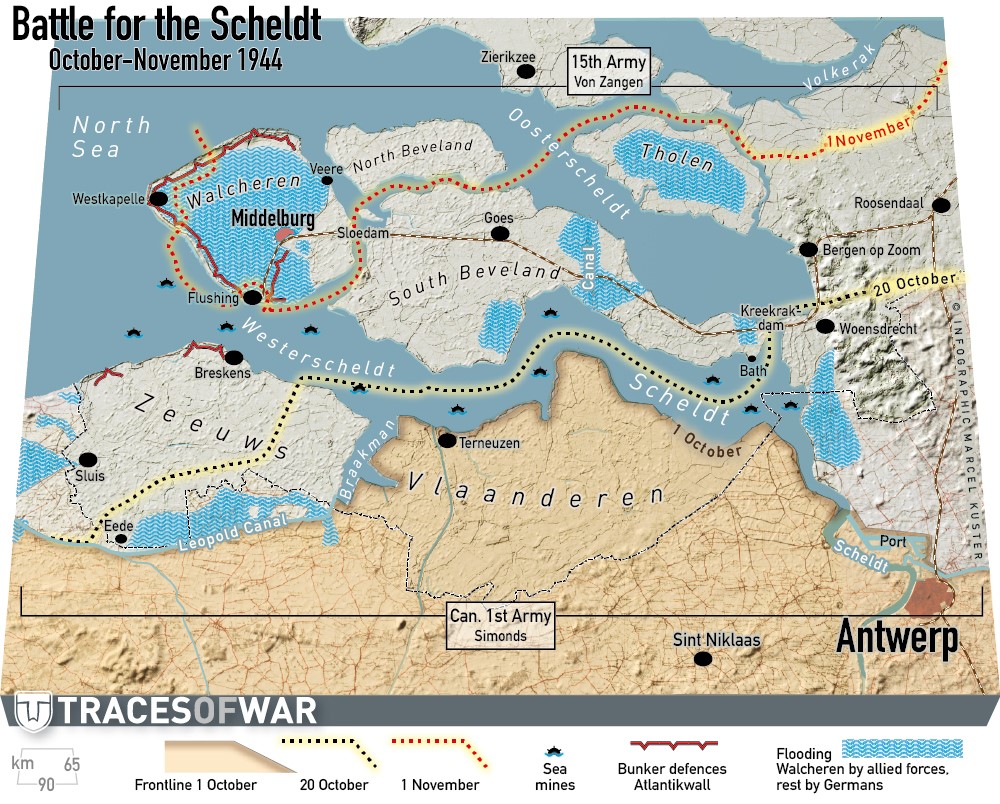Liberation Route Marker 385: Canadian liberator died in Kloetinge
Canadian liberator died in Kloetinge
One of the Canadian regiments that liberated South Beveland from 24 to 31 October was Le Régiment de Maisonneuve. Jean-Maurice Dicaire was part of it. Dicaire enlisted in Canada at 17, actually too young according to the rules.
In 1944, he was 23 when his regiment advanced from Schore to Kloetinge on the morning of 29 October. Other regiments in the area are the Black Watch (Royal Highland Regiment of Canada) and the Rileys (Royal Hamilton Light Infantry). Regularly, Dicaire's group has to stop when retreating German troops use their artillery to slow down the Canadians' advance. Near Kloetinge, this happens again.
Around 9.30am there is light gunfire on Kloetinge from the direction of Waanskinderen, a hamlet east of the village. A little later, the first Canadians venture into the village. They are received with enemy gunfire from Ter Vaten. The Germans then fled via the Noordeinde. Another group of Germans of about 25 men now emerge with a white flag in Ter Vaten and surrender. After several hours of silence, heavy German artillery starts firing towards the village.
At Bredeweg another large group of Germans turned out to be holding, firing at the advancing Canadians who were moving from Ter Vaten to Mannee.
Canadian artillery near Kapelle returned fire. Jean-Maurice failed to take cover in time and was hit in the back by a projectile near the Tervatenseweg and Daniëlsweg roads. He was seriously injured. He died in an emergency hospital. Residents of Kloetinge took his memory to heart, burying him in a place of honour in the cemetery where Jean-Maurice Dicaire still rests today.
Audiospot - Canadian liberator died in Kloetinge
Liberation Route Europe is a certified Cultural Route of the Council of Europe. With hundreds of sites and stories in nine European countries, the route links the main regions along the advance of the Allied Forces in 1943-1945.
The entire route consists of themed routes that can be travelled by by hiking, walking, cycling and car. These routes pass numerous historical and interesting sites and tell stories from a multitude of perspectives that were important in the final phase of World War II.
Many routes feature listening spots, offering the opportunity to listen to a historical story at a location. In addition, many ‘Vectors of Memory’ have been placed, indicating that the passer-by is on one of the Liberation Routes.
The routes can be found on the Liberation Route Europe website or in the app through which many stories can also be listened to.
Do you have more information about this location? Inform us!
Source
- Text: TracesOfWar & Liberation Route Europe
- Photos: Arjan Vrieze
Nearby
Museum
Point of interest
Monument
- Memorials French War Cemetery Kapelle - Kapelle
- Memorials NS Station Goes - Goes
- War Memorial Goes - Goes
Cemetery
- Commonwealth War Grave and War Memorial Kloetinge - Kloetinge
- French War Cemetery Kapelle - Kapelle
- Dutch war Grave Kapelle - Kapelle
Remembrance Stone
Fortification
- Tobruk Stp Hindenburg Hoedekenskerke - Hoedekenskerke
- Fv Unterstand WN 401 H Stavenisse - Stavenisse
- Fa Munition WN 401 H Stavenisse - Stavenisse







